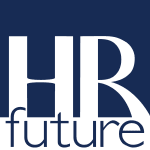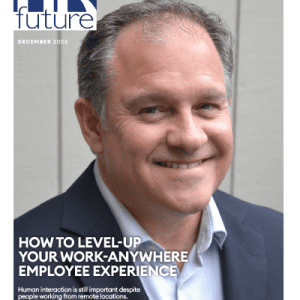In today’s dynamic workplace environment, managing employee benefits efficiently has become more crucial than ever. Among the various digital tools transforming human resources management, PTO (Paid Time Off) calculators have emerged as game-changing solutions that streamline benefit administration, enhance accuracy, and improve employee satisfaction. This comprehensive guide explores how these innovative tools are reshaping the landscape of modern HR management and delivering value to organizations of all sizes.
The Evolution of PTO Management in HR
Traditional PTO management methods often involved complex spreadsheets, manual calculations, and time-consuming processes that were prone to errors. HR professionals spent countless hours tracking vacation days, sick leave, and other types of time off, while employees struggled to understand their available balance and accrual rates. The introduction of PTO calculator has fundamentally transformed this landscape, bringing automation, accuracy, and transparency to the forefront of benefits management.
The journey from paper-based systems to sophisticated PTO calculators reflects the broader digital transformation in HR. Early computerized systems, while an improvement over manual methods, still required significant human intervention and lacked the sophisticated features we see today. Modern PTO calculators represent the culmination of decades of technological advancement and a deep understanding of HR professionals’ needs.
Understanding PTO Calculators: More Than Just Numbers
PTO calculators are sophisticated software tools designed to automate the calculation, tracking, and management of employee time off. These systems go beyond simple mathematics, incorporating various factors such as:
- Company policies and accrual rates
- Employment tenure and level
- State and federal regulations
- Holiday schedules
- Roll-over policies
- Time-off categories (vacation, sick leave, personal days)
The Technology Behind Modern PTO Calculators
Modern PTO calculators leverage advanced technologies to provide accurate, real-time calculations and insights. Key technological components include:
Cloud-based Architecture
- Enables real-time access from anywhere
- Facilitates automatic updates and maintenance
- Ensures data backup and security
- Allows for scalability and flexibility
Advanced Algorithms
- Handle complex accrual calculations
- Account for various time-off policies
- Process multiple request types simultaneously
- Manage policy exceptions and special cases
User-friendly Interfaces
- Intuitive dashboard designs
- Mobile-responsive layouts
- Customizable views for different user roles
- Accessible design features
Regulatory Compliance and Legal Considerations
One of the most valuable aspects of PTO calculators is their ability to help organizations maintain compliance with various regulations:
State-specific Requirements
- Different accrual rates
- Varying rollover policies
- Specific notification requirements
- Unique reporting obligations
Federal Guidelines
- FMLA integration
- ADA accommodation tracking
- Military leave management
- Other federal leave requirements
Industry-specific Regulations
- Healthcare sector requirements
- Government contractor obligations
- Union agreement compliance
- International labor laws
Key Benefits of Implementing PTO Calculators
Enhanced Accuracy and Compliance
One of the most significant advantages of PTO calculators is their ability to eliminate human error in calculations. These tools automatically apply complex accrual rules and policy requirements, ensuring consistent compliance with company policies and legal regulations. This accuracy is particularly crucial in states with specific PTO requirements or when managing a multi-state workforce.
The impact of improved accuracy extends beyond mere convenience:
1. Risk Reduction
- Minimized compliance violations
- Reduced audit concerns
- Better documentation
- Consistent policy application
2. Cost Savings
- Fewer correction requirements
- Reduced overtime costs
- Better resource allocation
- Minimized payroll errors
Time and Resource Optimization
By automating PTO calculations and tracking, HR departments can redirect their focus from administrative tasks to more strategic initiatives. Studies show that organizations using PTO calculators save an average of 15-20 hours per month in time previously spent on manual calculations and record-keeping.
This time savings translates into:
1. Strategic Focus
- More time for employee development
- Enhanced policy planning
- Improved workforce analytics
- Better stakeholder communication
2. Operational Efficiency
- Faster request processing
- Streamlined approval workflows
- Reduced administrative burden
- Improved resource planning
Improved Employee Experience
Modern PTO calculators often include self-service portals where employees can:
- View their current PTO balance in real-time
- Project future accruals
- Submit time-off requests
- Track approval status
- Plan their leave more effectively
This transparency and accessibility significantly improve employee satisfaction and reduce HR inquiries about PTO balances.
Impact on Modern HR Operations
Data-Driven Decision Making
PTO calculators provide valuable insights through comprehensive reporting features, enabling HR leaders to:
- Analyze time-off patterns
- Identify trends in PTO usage
- Make informed decisions about policy adjustments
- Plan for peak vacation periods
- Manage staffing levels effectively
Integration with HR Technology Stack
Modern PTO calculators seamlessly integrate with existing HR management systems, including:
- Payroll software
- Time and attendance systems
- HRIS platforms
- Employee scheduling tools
This integration creates a unified ecosystem that enhances operational efficiency and data accuracy.
Implementation Best Practices
Selecting the Right PTO Calculator
When choosing a PTO calculator, organizations should consider:
- Scalability to accommodate growth
- Customization options for specific policies
- User interface and ease of use
- Mobile accessibility
- Integration capabilities
- Reporting features
- Security measures
- Customer support quality
Change Management and Training
Successful implementation requires:
- Clear communication about the new system
- Comprehensive training for HR staff and employees
- Documentation of procedures
- Regular feedback collection
- Continuous system optimization
The Future of PTO Management
Artificial Intelligence and Machine Learning
Next-generation PTO calculators are incorporating AI capabilities to:
- Predict PTO trends
- Recommend optimal leave scheduling
- Identify potential coverage gaps
- Suggest policy improvements
- Automate approval workflows
Enhanced Analytics and Reporting
Advanced analytics features are enabling organizations to:
- Benchmark PTO usage against industry standards
- Correlate PTO patterns with employee performance
- Assess the impact of PTO policies on retention
- Optimize workforce planning
Cost-Benefit Analysis
Financial Benefits
Organizations implementing PTO calculators typically see:
- 30% reduction in administrative costs
- 25% decrease in PTO-related errors
- 20% improvement in resource allocation
- Significant reduction in compliance-related risks
Intangible Benefits
Beyond measurable financial gains, organizations experience:
- Improved employee morale
- Enhanced work-life balance
- Better policy compliance
- Increased transparency
- Stronger employer brand
Addressing Common Challenges
Technical Considerations
Organizations must address:
- Data security and privacy
- System backup and recovery
- Integration with legacy systems
- Mobile accessibility
- User authentication
Policy Standardization
Successful implementation often requires:
- Review and update of existing PTO policies
- Standardization of accrual rules
- Clear documentation of exceptions
- Regular policy reviews and updates
Case Studies and Success Stories
Mid-Size Manufacturing Company
A manufacturing company with 500 employees implemented a PTO calculator, resulting in:
- 40% reduction in HR administrative time
- 95% decrease in PTO calculation errors
- Improved employee satisfaction scores
- Streamlined approval processes
Global Technology Firm
A technology company with 2000+ employees across multiple countries achieved:
- Standardized PTO tracking across regions
- Improved compliance with local regulations
- Enhanced reporting capabilities
- Significant cost savings
Best Practices for Ongoing Management
Regular System Maintenance
Organizations should:
- Update software regularly
- Review and adjust configurations
- Monitor system performance
- Back up data consistently
- Maintain security protocols
Continuous Improvement
Successful organizations:
- Collect user feedback regularly
- Monitor usage patterns
- Implement system enhancements
- Update policies as needed
- Provide ongoing training
Conclusion
PTO calculators have revolutionized employee benefits management by bringing automation, accuracy, and efficiency to a traditionally complex process. As organizations continue to prioritize employee experience and operational efficiency, these tools will play an increasingly crucial role in modern HR management. By implementing PTO calculators effectively and following best practices for ongoing management, organizations can achieve significant improvements in their benefits administration while enhancing employee satisfaction and reducing administrative burden.
The future of PTO management lies in continued technological advancement, with AI and machine learning promising even greater capabilities. Organizations that embrace these tools and adapt their processes accordingly will be better positioned to attract and retain talent while maintaining efficient operations in an increasingly competitive business environment.
This comprehensive transformation of PTO management through digital calculators represents just one aspect of the broader digital transformation in HR. As technology continues to evolve, organizations must stay informed about new developments and be ready to adapt their systems and processes to maintain competitive advantage in employee benefits management.
Guest writer

























